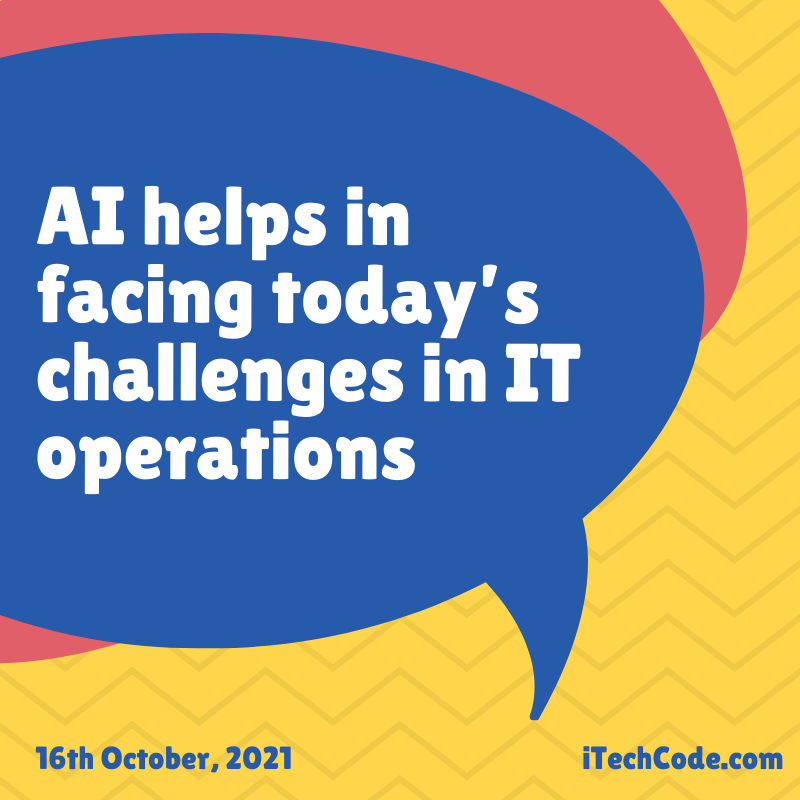The majority of the time, IT operations are treated as an afterthought. It must keep the boat afloat and respond to any difficulties that arise. However, IT team members are typically highly skilled professionals who, if given the opportunity, might play a strategic role in the company’s growth rather than constantly patching faults, could play a strategic role in the company’s growth. The emphasis must shift away from reactive management and toward proactive management.
By placing a lot of the day-to-day work on smart autopilot, you’ll have a lot more time to look for methods to decrease expenses, increase security, and improve overall efficiency. IT operations are currently confronted with a number of issues.
But what are these critical challenges?
Users’ expectations are rising on a daily basis
Because technology is rapidly improving, people are becoming more demanding in terms of the level of service they want and the number of errors they are willing to accept. The time to market for digital products is also decreasing, which means there is less room for errors and rework. As basic features, users demand perfect performance and access to customer assistance 24 hours a day, seven days a week.
The number and complexity of the services is also on the rise
There is a thriving market for new services since cloud-based and modern systems are open to add-ons and modular enhancements. These provide enormous chances for innovation and efficiency, but they also add complexity and danger of failure. When it comes to troubleshooting services with add-ons, determining the root reason can be extremely difficult.
The IT system is becoming more and more complex, so the number and the level of the monitoring tasks
As enterprises employ more and more interconnected systems from many providers, a need for operation centralization and a dashboard that highlights all critical alerts arises. IT departments must coordinate information influxes and output streams, and they must frequently coordinate with external entities.
Given these constraints, as well as budgetary constraints, it’s evident that IT operations may benefit from a technique to become more predictive, automate, and finally take a proactive rather than reactive strategy.
Hundreds of KPIs are used in most IT systems, each of which generates logs, warnings, and alarms. Filtering the noise’s true notifications by hand is virtually a full-time job when dealing with all of these information streams. To combat alert fatigue, the approach is to automatically filter them rather than muffle them.
The obvious need for a new approach to dealing with the alerts
While the NOC strives for optimal network performance and helps to reduce downtime, the SOC deals with cyberattacks and threats by investigating, monitoring, analyzing, and resolving issues on a continuous basis. These groups keep an eye on a company’s internet networks, cloud usage, servers, websites, VPNs, and Wi-Fi access points, among other things.
Both of these support teams must work in near-real-time to identify and resolve issues before they become out of hand. Most firms rely on automatic security tools to remain on top of potential dangers, which set off warnings whenever a possible warning surfaces.
However, the sheer volume of data analyzed by these monitoring techniques quickly leads to alert fatigue. The truth is that most security and system alerts are just simple cautions that don’t necessarily indicate an actual threat; they could simply be a spike in activity. To determine whether or not an alarm should be escalated, it must be put into context.
Context is essential in cybersecurity since the more data you have, the more accurate your forecasts will be. Looking at a problem from several angles, such as the compromised assets, the source of the attack, the targets, and other factors, can help distinguish between noise and real threats.
How about using AI for alert triaging?
The short answer is no; human oversight and ongoing monitoring are still required. The use of artificial intelligence for alert triage does not render the NOC and SOC teams obsolete. It relieves them of the time-consuming task of researching false positives, allowing them to devote more time to analyzing serious threats.
There is a scarcity of cybersecurity experts in today’s businesses. They’ll take any assistance they can receive, and an AI-based triage system (such as Arcanna.ai) can be the difference between information paralysis and a well-managed security system.
When it comes to reducing risks, minimizing damage, and developing procedures to prevent repeat attacks, the cybersecurity engineers’ responsibility stays unaltered.
Those concerned that artificial intelligence (AI) will put them out of work should consider it as a tool and, at most, an aid, rather than a rival.
Most companies that utilize machine learning to reduce alert fatigue report increased productivity and employee well-being, as well as less stress and more time for internal innovation.
Using AI-powered alert triage is considered cutting-edge, and it is chosen by large enterprises with a high volume of alerts. As the Internet of Things grows in popularity, these tools will become increasingly important for everyday office management. AI alert triage systems will become standard features in a variety of industries, including logistics, healthcare, manufacturing, and energy.

You can also stay updated by subscribing to iTechCode.